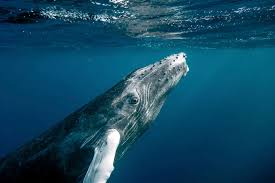On Saturday, Feb. 8. 2025, a kayaker off the coast of Chile was briefly swallowed by a whale before being quickly released unharmed. The incident was caught on camera and has quickly gone viral.
23-year-old Chilean national Adrián Simancas was kayaking in Bahía El Águila near the San Isidro Lighthouse in the Strait of Magellan with his father, Dell Simancas, when a humpback whale emerged from below and engulfed both Adrián and his kayak into its mouth. After a few seconds, the whale spat out what was perceived as unusual human meat, consequently freeing Adrián.
Typically enjoying a diet of krill and small bait fish, the humpback whale’s digestive system is not equipped to handle large prey, making it natural for the whale to reject Adrián as a meal.

Adrián described the incident to local media outlets, recalling, “I saw something blue and white passing by my face, and I did not understand what was going on. And then I went under and I thought that he had eaten me.”
In the background of the video, Adrián’s father, Dell — who recorded the whole incident — can be heard screaming for his son to “stay calm, stay calm” after Adrián was released from the whale’s mouth.
Adrián, in an interview with the Associated Press, described the “terror” of being trapped inside the whale, explaining, “I thought I was dead,” Adrián further elaborated, “I thought it had eaten me, that it had swallowed me.”
But, Adrián expressed that the real fear did not set in until he resurfaced: “When I came up and started floating, I was scared that something might happen to my father, too, [and] that we wouldn’t reach the shore in time, or that I would get hypothermia.”
After a few moments in the water, Adrián reached his father’s kayak safely, allowing the pair to return to the shore unharmed.
Located 1,600 miles south of Chile’s capital, Santiago, the Strait of Magellan is a popular destination for adventurous tourists. Its icy cold turbulent waters provide challenges for sailors, swimmers and explorers alike.
Although it is summer in the Southern Hemisphere, temperatures in this region remain cold, with lows dropping below 39 degrees Fahrenheit and highs rarely exceeding 68 degrees Fahrenheit.
A similar incident occurred on a California beach in 2020. Off the coast of Avila Beach, a humpback whale surfaced, swallowed a kayaker and his kayak, then let the human go. GoPro video taken by the kayaker of the incident suggests that — since the surrounding water was filled with small fish — the kayaker was simply caught in the crossfires of the humpback’s quest for food.
Whale attacks on humans are extremely rare in Chilean waters. However, it is becoming increasingly common for whales to die as a result of collisions with cargo ships.

Whales are at risk of major injury and death from ship strikes worldwide. But off the Chilean coast, these strikes have become more deadly over the last decade. Researchers have identified Chile as having one of the highest rates of whale deaths caused by ships globally because they lack measures to protect whales and mitigate such strikes.
Co-author of this research of the British Antarctic Survey, Dr. Jennifer Jackson told The Guardian, “This is the first study to look at [fatal whale collision] problem at a global scale, enabling global patterns of collision risk to be identified using an extremely large contemporary dataset of four recovering whale species.”
Whale species who are most affected include fin whales, humpback whales, sei whales and blue whales. To mitigate this issue, Dr. Jackson recommends implementing protective measures for whales, such as speed reductions for vessels and rerouting shipping lanes away from key whale habitats.
Dr. Freya Womersley of the Marine Biology Association expresses, “It’s encouraging to see that targeted shipping management – over a relatively small ocean area – could achieve full strike-risk hotspot coverage, making positive conservation outcomes very achievable for these species.”





